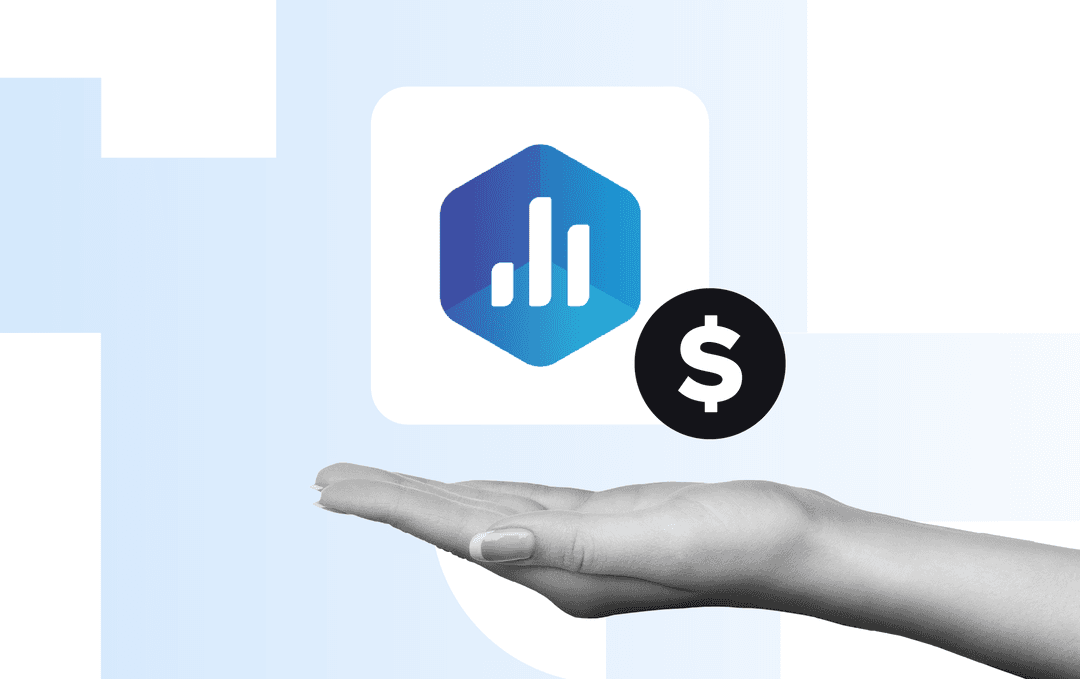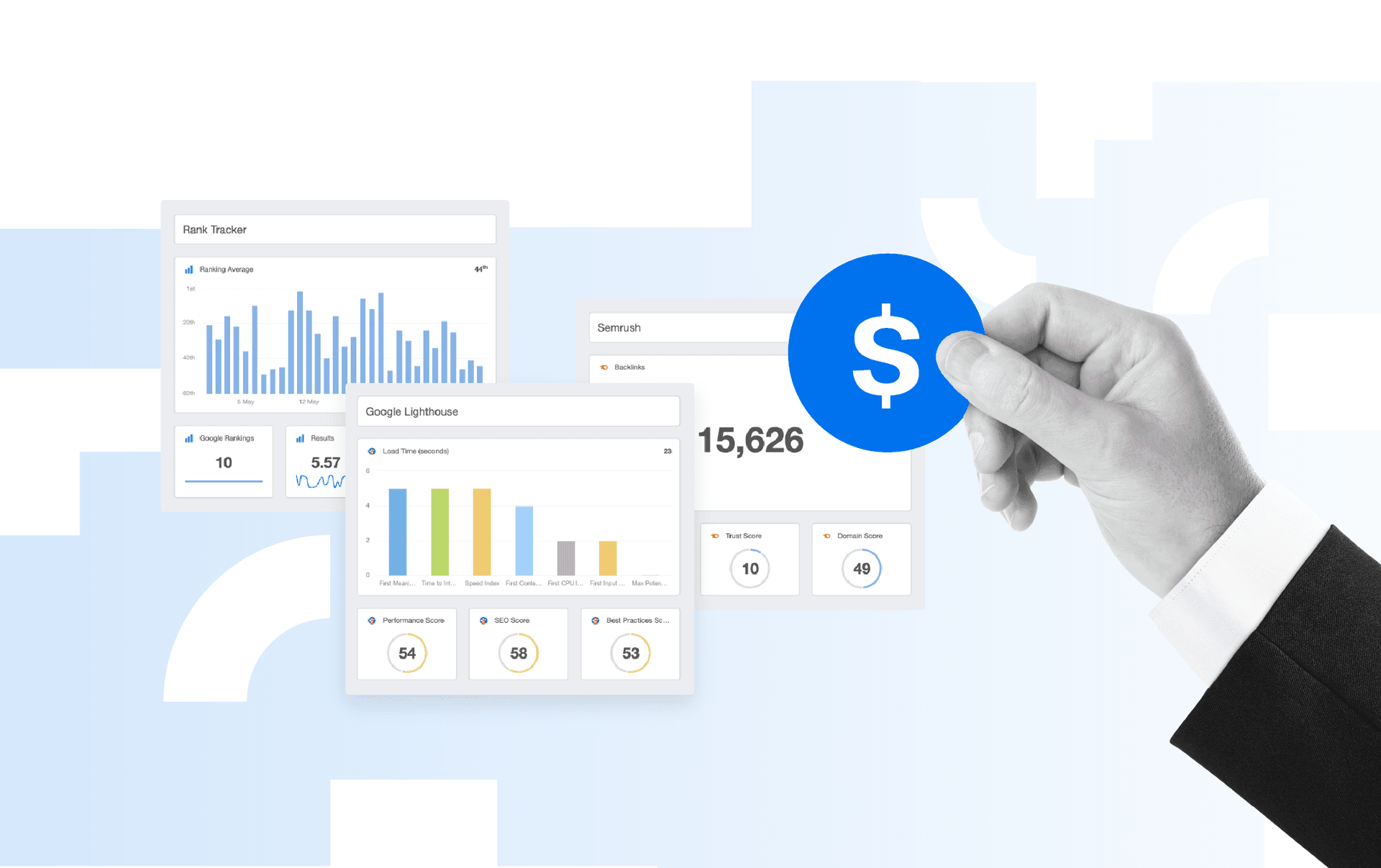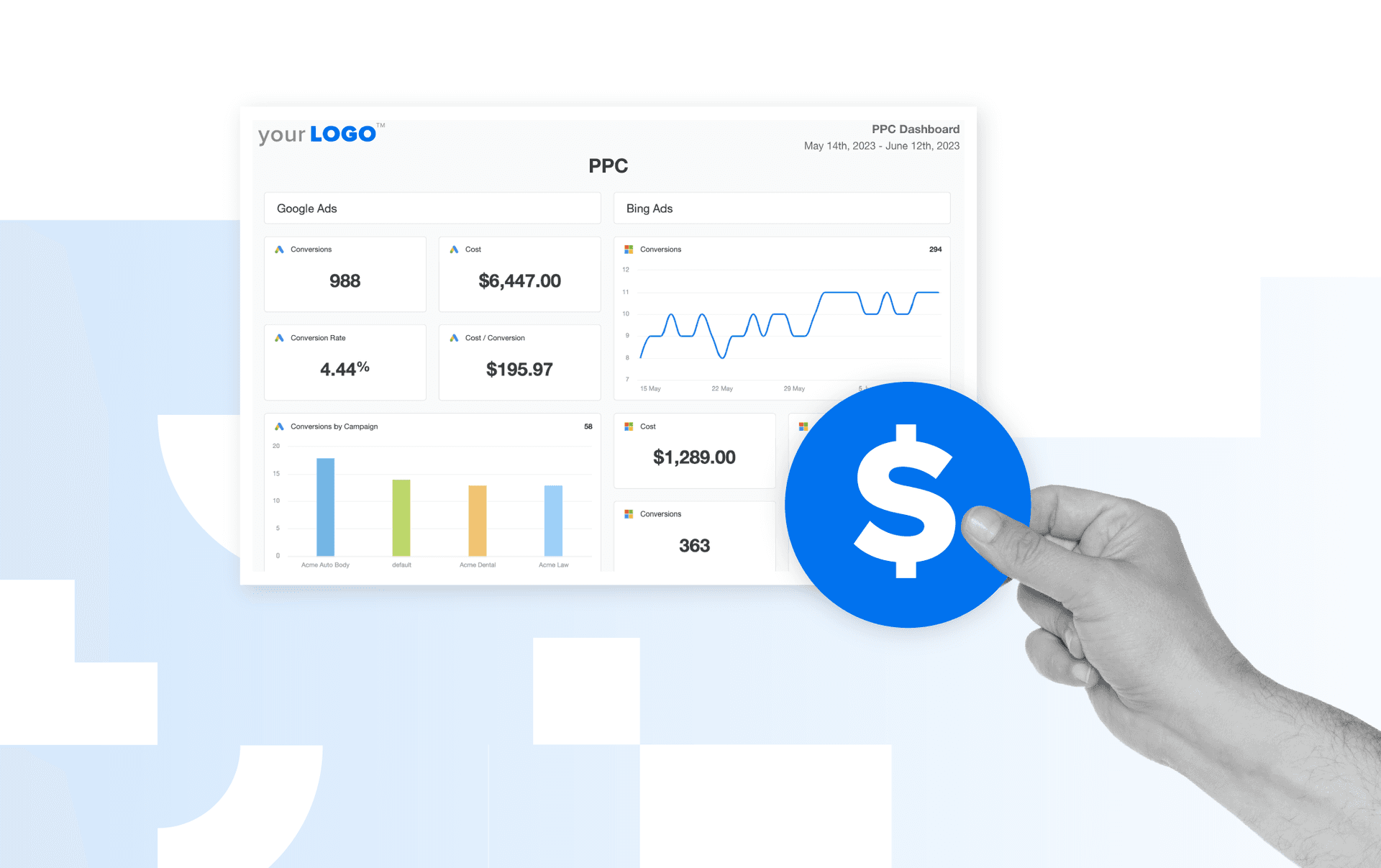Table of Contents
QUICK SUMMARY:
Databox is a popular reporting and analytics tool, but is it the best fit for marketing agencies? This comparison breaks down Databox vs. AgencyAnalytics and other top reporting tools—covering pricing, integrations, automation, AI features, and client portals. In this article, you’ll learn which platform delivers more value for your team.
Agencies seeking analytics and reporting solutions in 2025 might be considering Databox among their options—but how much will the platform really cost you? We've done a deep dive into Databox’s pricing model and paid plan options to give you the full picture of the software's overall value.
We've also stacked up Databox's feature set against alternative solutions (including AgencyAnalytics) to help you compare and contrast your options. Plus, we consulted real user reviews to get a sense of how actual Databox customers feel about the software.
Let's get into it!
What is Databox?
Databox is a cloud-based business intelligence platform that teams use to bring together data from multiple sources, build interactive dashboards, and track key performance metrics. It’s used by in-house marketing teams, analytics professionals, and marketing agencies who need a more accessible alternative to heavy enterprise BI tools.
Databox offers users a centralized reporting interface to turn raw data into visual, shareable, and customizable reports. This helps teams stay aligned, track performance, and make data-informed decisions. Here's what one user says about Databox:
[W]e utilize it to keep tabs on sales, marketing, and the overall financial health of the business. Dashboards and widgets make it simple to keep tabs on where we are and how things are progressing.
Databox key features
Here's an overview of the core features Databox offers:
Drag-and-drop dashboard builder: Lets you create custom data dashboards by arranging widgets and visualization types in a flexible layout.
Multiple data source connectors: Brings data from many platforms (Google Analytics, advertising platforms, Google Sheets, and other tools) into one reporting environment.
Custom metrics: Lets users define their own formulas and KPIs so reporting is tailored to your specific business needs.
Pre-built dashboard templates: Provides ready-to-use layouts and dashboards to get teams started quickly.
Automated reporting & alerts: Includes scheduling, live dashboards, mobile and TV display, and notifications when a metric moves in the wrong direction.
Security & single sign-on (SSO): It has features like two-factor authentication, review of active sessions, SSO and data encryption, covering GDPR basics.
Merge data across sources: Ability to combine multiple dimensions and data sources into one metric set for more holistic reporting.
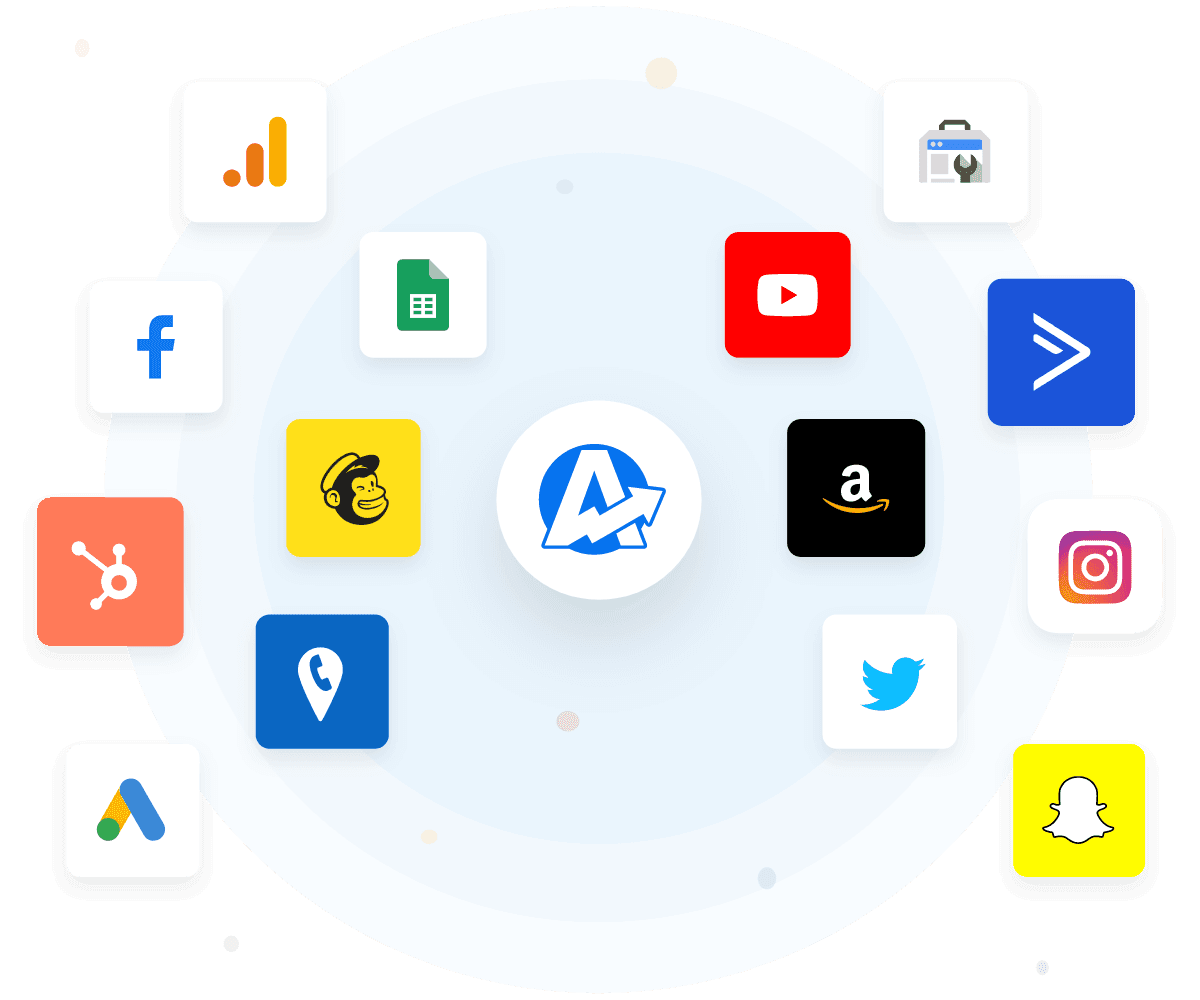
Combine data from more than 80 marketing platform integrations, at no added cost. Check out AgencyAnalytics, free for 14 days!
Overview of Databox pricing plans
Databox pricing is structured into three paid plan tiers: Professional, Growth and Premium. Each plan is priced by the number of data sources you use (i.e., accounts/properties you connect), rather than per-user pricing. Since unlimited users are included in all plans, the key cost driver is how many data sources and add-ons you need.
While every plan includes some data sources in its baseline price point, additional sources cost $7 per month. Users who opt for an annual payment plan (rather than monthly) get a 20% discount, bringing this additional cost down to $5.60 per data source. Several reviews of the platform note its high price point:
Very expensive for what you get. Simple dashboards and very hard to customize.
Just about every basic feature, data integration, reporting, or branding will cost you additional $$$$$$$.
Databox does not offer a free plan, but a 14-day trial period is available for the Professional and Growth plans. Here's a break down of each paid plan and what it offers:
Professional Plan
Databox’s Professional Plan costs $199 per month, or $159 per month with a yearly subscription. Teams who want a straightforward data organization and reporting tool are generally a good match for this plan, which offers unlimited dashboards, pre-built templates, and custom metrics with an hourly refresh.
The main limitation of the Professional Plan is that it only comes with three data sources. If you want to connect additional data sources, you'll have to pay the add-on fees for each one. Some other advanced features like AI-generated insights and advanced filtering are locked to higher-tier plans, too.
Growth Plan
Databox’s Growth Plan costs $499 per month, or $399 per month with a yearly subscription. In addition to the features you get with the Professional Plan, the Growth Plan adds AI-generated performance summaries, advanced filters, benchmarks, and the ability to pull data from your data warehouse.
While this plan does offer additional features, it also only comes with 3 data sources. So once again, the costs can add up quickly if you need to connect a lot of data sources. Forecasting, fiscal calendars, and Databox's advanced security service all also come as paid add-ons, increasing the total cost of your plan.
Premium Plan
Databox’s Premium Plan costs $999 per month, or $799 per month with a yearly subscription. One of the biggest selling points of this plan is that it includes 100 data sources. It also includes forecasting, fiscal calendars, and premium support including a dedicated customer success manager, guided onboarding, and an advanced security service.
While nearly all features are unlocked with this plan, the complexity of some tools may require additional training or onboarding support. Teams that don’t need advanced analytics, AI insights, or priority support might find that the Professional or Growth plans meet their needs at a lower cost.
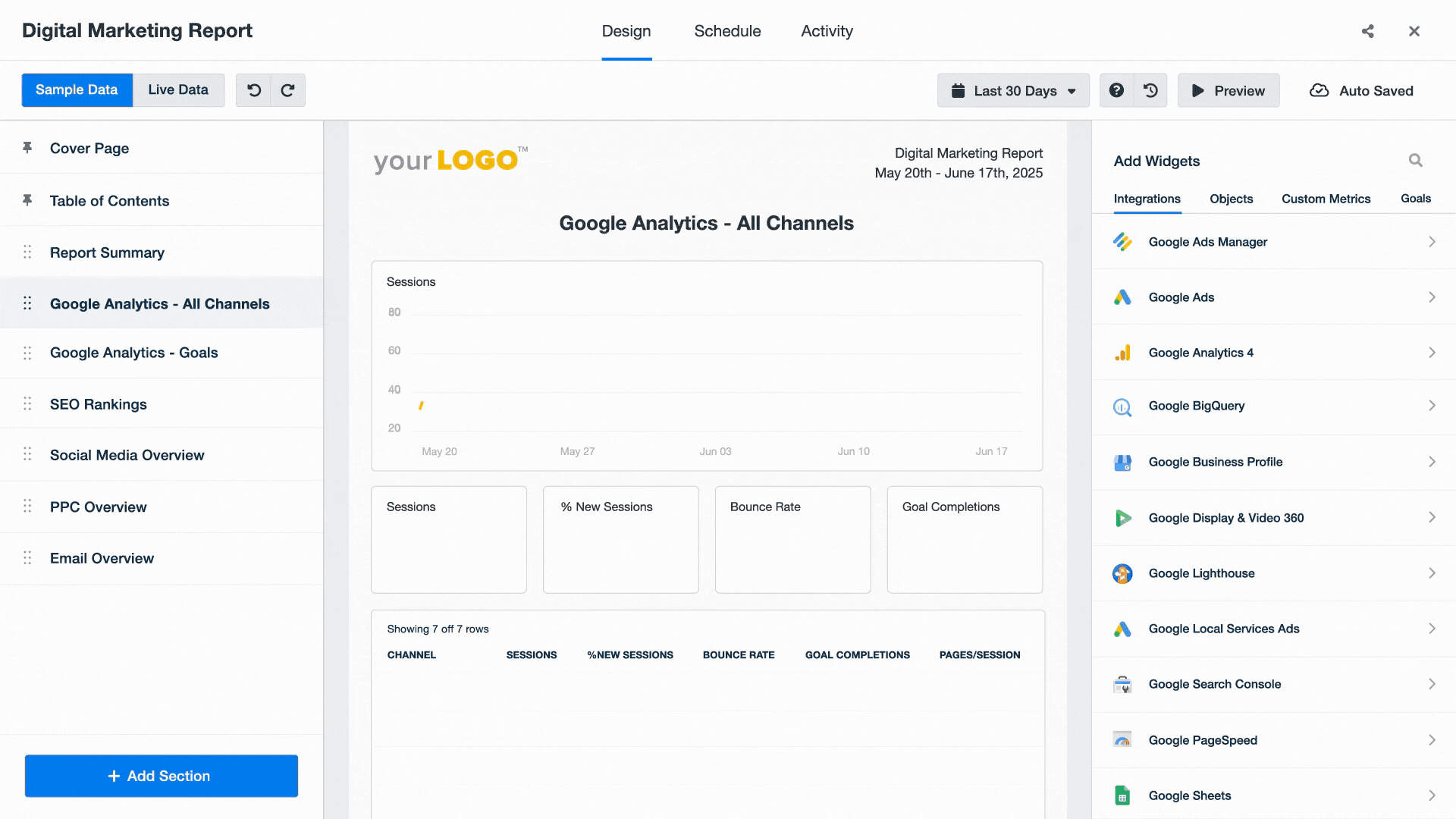
Test out the only reporting platform purpose-built for marketing agencies. Track every aspect of your agency’s marketing efforts and prove ROI to clients in sleek, custom reports and dashboards. Try AgencyAnalytics free for 14 days!
Databox vs. Competitors: Value & Features
Databox offers good reporting and analytics features, but its pricing model can be expensive for agency teams managing several clients and campaigns. Its dashboards are interactive and flexible, AI-generated insights are available in higher tiers, and it supports a wide range of integrations.
However, features like advanced filtering, datasets, and white label options are locked to higher-tier plans, which means teams need to pay more to unlock the full functionality. Plus, users need to pay extra to connect more than 3 data sources with the entry- and mid-tier paid plans.
On top of that, some user feedback reports a steep learning curve, buggy experience, and clunky UI:
After 2 years of trying, we were never able to fully launch Databox with our clients because there is always another issue with Databox. Their templates break, individual metrics stop working.
It has a lot of potential, but there are way too many bugs, and the data is not consistent enough. Setting up reports is a nightmare, and it's a hit and miss kind of thing.
Compared to other business intelligence and reporting tools, Databox works best for in-house teams or smaller agencies that need a centralized reporting tool with ready-to-use templates and flexible layout controls. Marketing agencies managing higher numbers of clients, requiring fully white labeled dashboards, or seeking more predictable per-user pricing may find better value in Databox alternatives like AgencyAnalytics.
Here's an overview of how Databox stacks up against AgencyAnalytics and other reporting tools:
Criteria | Databox | AgencyAnalytics | Other alternatives |
|---|---|---|---|
Pricing | Starts at $159/month | Starts at $59/month | Looker Studio: Free plan; Klipfolio: From $49/month; Power BI: From $10/user |
Pricing model | Tiered plans with add-on costs for additional data sources ($5.60-$7.00 per extra source) | AgencyAnalytics pricing plans are tiered by number of clients; predictable per-client pricing, and easy to upgrade or purchase a subscription (see subscription and billing FAQs for details) | Klipfolio is user- and source-based; Looker Studio is free but requires paid connectors |
Integrations | 100+ integrations, though some advanced connections require setup or are limited by plan | 80+ native integrations with stable, direct connections | Looker Studio relies on partner connectors; Klipfolio supports API integrations |
Custom metrics | Supported through datasets and calculated metrics, but setup can be complex | Full support for custom KPIs and calculated metrics across plans | Klipfolio offers strong custom metrics; Looker Studio requires technical setup |
Automation | Scheduled reports and alerts available; limited workflow automation | Fully automated, recurring reports and dashboards for each client | Looker Studio requires manual updates; DashThis offers light automation |
Client portals | Client workspaces available; white labeling comes as an add-on | Dedicated client portals with full white labeling and role-based access | Limited or manual sharing (varies by tool) |
Ease of use | Intuitive dashboard builder, but complex for advanced data modeling | Built specifically for agency workflows; strong usability ratings | Looker Studio is technical; Klipfolio has a steeper learning curve |
Best fit for | In-house marketing teams or small agencies with simple reporting needs | Agencies managing 5–100+ clients who need scalable, automated reporting | BI teams (Looker), freelancers (DashThis), technical analysts (Klipfolio) |
Impress clients and save hours with custom, automated reporting.
Join 7,000+ agencies that create reports in under 30 minutes per client using AgencyAnalytics. Get started for free. No credit card required.
Which Plan is Right for You?
Choosing the right Databox pricing plan depends largely on the size of your team, the number of clients or data sources you manage, and the depth of reporting and analytics you need. Here's a breakdown of what types of users are best suited to each plan:
Professional Plan: Best suited for small teams, individual marketers, or startups. This plan includes unlimited dashboards, unlimited users, and up to three data sources. It allows teams to track key metrics, build custom dashboards, and automate basic reporting. Teams managing multiple clients or many integrations may quickly reach limits on included data sources, and advanced features like AI insights and datasets are not included.
Growth Plan: Ideal for medium-sized marketing teams, agencies beginning to manage multiple clients, or analytics teams needing more sophisticated reporting. Growth adds AI-generated performance summaries, datasets for combining multiple data sources, and advanced filtering capabilities. Users are able to blend data across platforms and track performance across multiple campaigns. Extra data sources beyond three still incur additional costs.
Premium Plan: Designed for large in-house teams, multi-client agencies, or enterprises. Premium includes up to 100 data sources, AI insights, priority support, advanced security services, and near real-time updates. This plan supports complex reporting, several clients, and extensive dashboards. The main drawback is the higher cost, which escalates further if additional data sources are needed.
While users might not need all the features that come with Premium—or want to pay that price point—for some, the access to priority support may be worth it. Several user reviews mention slow response times and unsatisfactory responses from the Databox support team:
Customer support was unhelpful and their billing and refund policies made things worse—hard to navigate and unfair in practice.
I'm not sure what has happened with the customer support team at Databox but they are fairly unresponsive.
Databox’s Agency Pricing
Databox offers features designed to support agencies, though its pricing and setup are not specifically tailored to agency users. Agencies are able to manage multiple client accounts, set up and customize dashboards for each client, and use pre-built templates to streamline reporting across campaigns.
The platform supports blending data from multiple sources, calculating custom metrics, and scheduling automated reports, which are all features that help agencies save time and deliver consistent insights to clients.
Here's a closer look at the key features Databox offers that agencies benefit most from:
Client workspaces: Organize dashboards and reports by client to maintain clear separation of data and insights.
White label dashboards (Premium only): Rebrand dashboards with client logos, custom domains, and color schemes for a polished presentation.
Automated reporting & alerts: Schedule reports to deliver insights to clients on a daily, weekly, or monthly basis.
Multiple data sources: Connect ad platforms, Google Analytics, spreadsheets, and more for comprehensive reporting across client campaigns.
Reusable templates: Agencies can create templates for recurring reporting needs to save time across clients.
Even with these capabilities, Databox’s pricing model becomes costly for agencies who want to monitor multiple campaigns across several clients. Some agency-specific capabilities like white labeled dashboards, priority human support, and advanced AI insights are also reserved for the Growth or Premium plans.
Since the platform isn't built specifically for agencies, it's not always able to meet agency needs:
We are an agency that loves data, so I wish you could customize the date ranges more than simply daily, weekly, or monthly.
An alternative solution purpose-built for agencies
For agencies that want predictable, per-client pricing and deep marketing-focused reporting, a platform purpose-built for agencies, like AgencyAnalytics, provides better value and simpler scalability. AgencyAnalytics features are well suited to teams who need to track performance across clients and campaigns, and offer exclusive benefits for agencies.
Here's a look at AgencyAnalytics key features:
White label branding & client portals: Dashboards and reports are white label ready, letting you set up a custom domain, logo, color scheme, logo on PDFs etc.
Automated client reporting: Built-in scheduling of branded reports, delivery to clients, recurring templates and full automation for editing dozens of reports.
Client campaign & multi-client workflow support: Designed for agencies managing many clients, with workflows, permissions, client vs. staff access, client portals.
Marketing-channel integrations and SEO tools: Integrations tailored for agencies like SEO audit tools, backlink monitoring, and rank tracking in addition to standard analytics.
Drag-and-drop dashboard builder with agency templates: Ability to fully customize dashboards, and templates built with agency use-cases in mind (client deliverables, white label layouts).
What about AI? AI summaries generate narrative summaries of client performance on reports and dashboards, while the Ask AI feature helps users understand data and metrics trends.
See the power of a purpose-built agency reporting tool—try AgencyAnalytics free for 14 days.
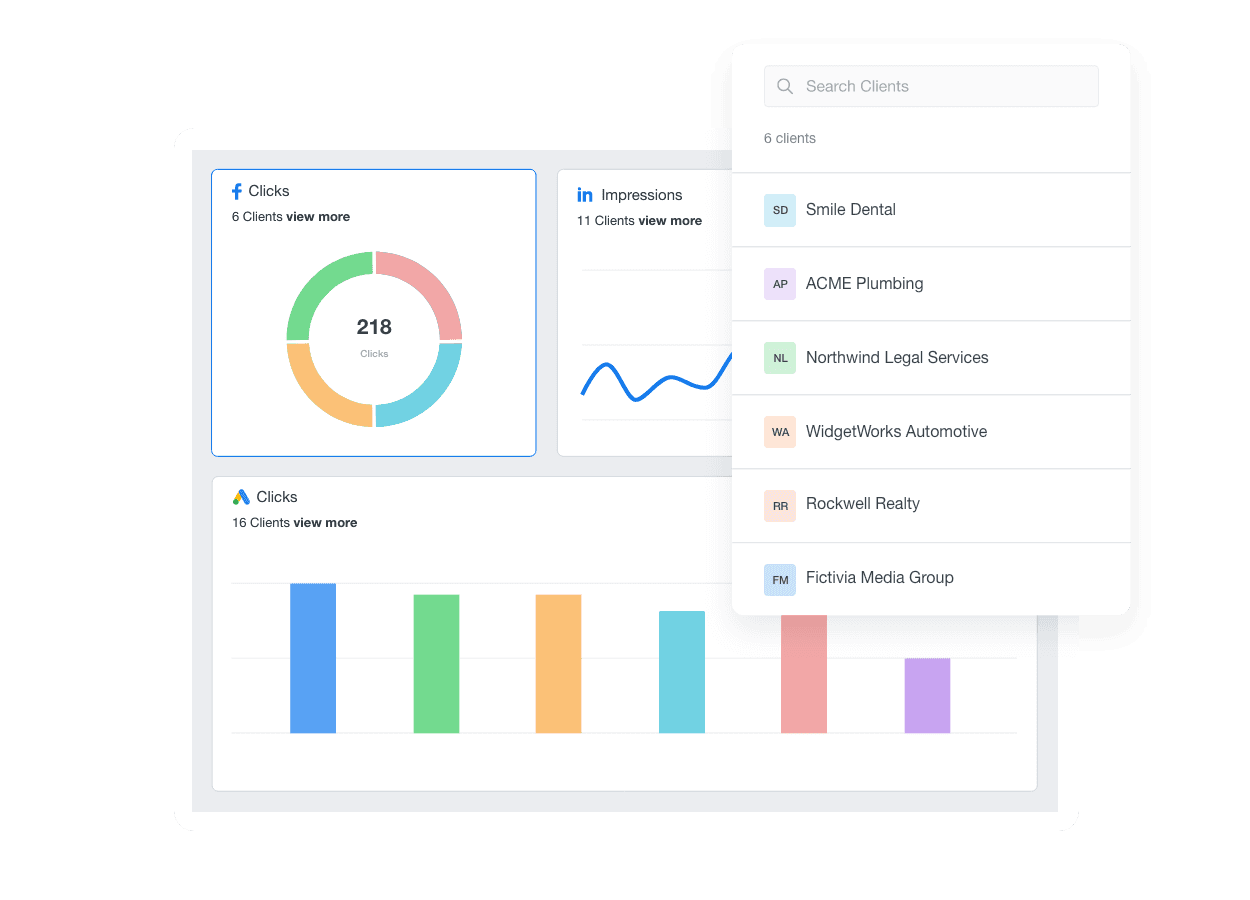
Gain a bird’s eye view of performance across all your clients with the roll-up table from AgencyAnalytics. All your client data, at your fingertips–try it free today for 14 days.
Final thoughts: is Databox worth the price tag?
Databox offers a solid business intelligence and reporting solution, but its pricing model quickly runs up costs between additional data sources and add-on features.
For in-house marketing or analytics teams, Databox’s core features and integrations may justify the cost. But agencies looking for more predictable pricing, deeper marketing integrations, and built-in client management tools may find better long-term value with a platform like AgencyAnalytics.
Ultimately, the right choice depends on how your team uses data: if you need a BI solution that unifies metrics on one screen, Databox delivers. If you need streamlined client reporting, automation, and scalability, AgencyAnalytics is likely the better investment.

Written by
Kyra Evans is the Manager of Content Marketing at AgencyAnalytics. She has over 15 years of experience writing content for SaaS, tech, and finance brands. Her work has been featured by HuffPost and CBC, and she serves an engaged social media readership of over 30,000 community members.
Read more posts by Kyra EvansSee how 7,000+ marketing agencies help clients win
Free 14-day trial. No credit card required.



